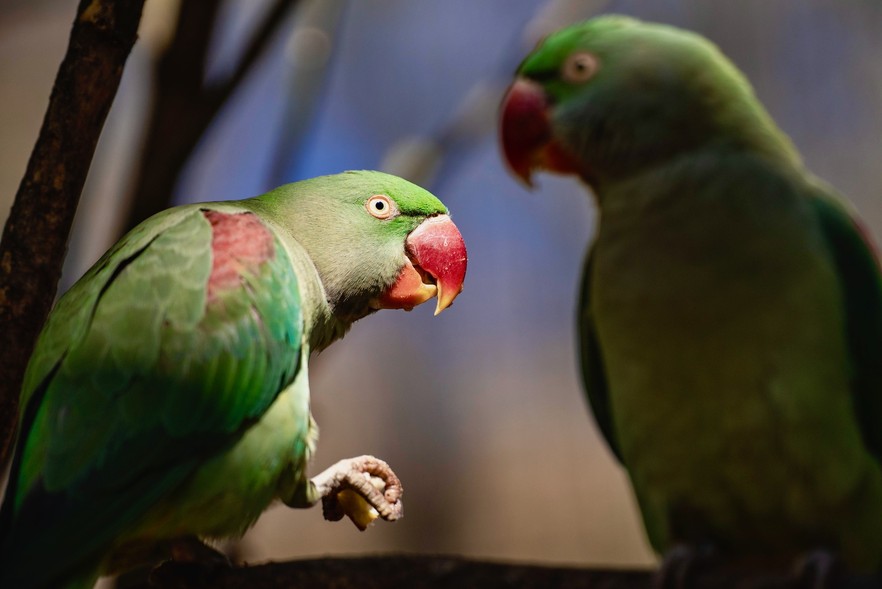
6 August 2025
A pair of Alexandrine parakeets at the Johannesburg Zoo. The Alexandrine parakeet is listed as near threatened by the International Union for Conservation of Nature. Its population has declined steeply due to habitat loss and the illegal wildlife trade.
The Johannesburg Zoo houses over a hundred species of birds, including eagles, owls, vultures, cranes, pelicans and parrots. Ihsaan Haffejee photographed them.
GroundUp visited the zoo recently to see its birds, some of which have been classified as vulnerable and endangered by the International Union for Conservation of Nature (IUCN).
Habitat loss, hunting and climate change are some of the major threats to birdlife around the world.
A pair of Blue Cranes. The Blue Crane is the national bird of South Africa. The species is listed as vulnerable due to a steep decline in population.
The Johannesburg Zoo is working with the Mabula Ground Hornbill Project to halt the decline in numbers of the Southern Ground Hornbill, classified as endangered in South Africa, Eswatini and Namibia.
Wattled Cranes, the largest crane species in Africa and the second tallest species of crane in the world, can also be viewed at the zoo. The cranes are part of a recovery program developed to protect the species. The wattled crane’s conservation status in South Africa recently improved from critically endangered to endangered due to successful conservation efforts. The captive population acts “as the genetic reservoir” in case of a catastrophe in the wild, according to Themba Majola, an animal keeper at the zoo.
The Southern Bald Ibis is currently listed as vulnerable. It is threatened by hunting and disturbance of its breeding colonies, as well as loss of habitat.
“We also use awareness and education,” says Themba Majola, an animal keeper at the zoo. Majola runs an owl education project teaching communities about the importance of owls to the ecosystem and to dispel the superstitions that often lead to people killing owls. “The educational and the conservation work that we do at the zoo is important because we are trying to preserve the lives and habitats of birds which are vital for a healthy ecosystem.”